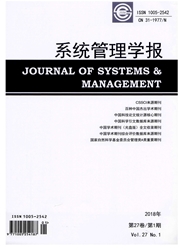

 中文摘要:
中文摘要:
在由1个供应商和1个零售商构成的两级供应链中,比较分析了供应链在集中决策下,采取商业信用和直接贷款这两种融资模式的整体利益,给出了商业信用优于直接贷款的前提条件,以及信用期限的决策范围。为激励零售商和供应商共同采用商业信用,提出了一种收益共享一成本共担的供应链协调机制:零售商与供应商共同分享产品的销售收益;同时,供应商为零售商分担产品的库存成本。最后,通过算例对商业信用的期限决策和协调机制进行了数值分析。
 英文摘要:
英文摘要:
For a supply chain with one manufacture and one retailer, we compare the overall profits of a centralized supply chain with trade credit, and with direct loan. The pre-conditions that trade credit surpasses the direct loan, as well as the range of credit term are presented. To motivate the use of trade credit, a coordination mechanism with sales revenue and cost sharing is proposed. That is, the retailer shares the sales revenue with supplier, and at the same time, supplier shares the product inventory cost with the retailer. A numerical example is presented to illustrate the trade credit term decision and coordination mechanism.
 同期刊论文项目
同期刊论文项目
 同项目期刊论文
同项目期刊论文
 期刊信息
期刊信息
